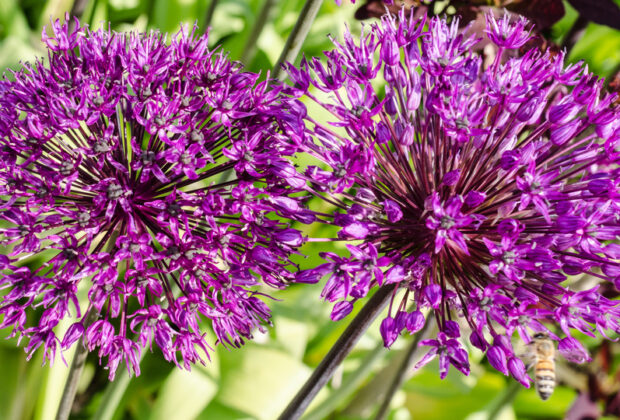Members of the allium genus include the onion, leek, chive, and garlic. They might be red, yellow, or even a very faint white, and their flavors can range from pleasantly sweet to somewhat spicy. Onion bulbs grow best in full sun and can be divided into two categories, with the former generating superior bulbs and the latter having less robust flavor. The long-days type has a more robust flavor and a higher quality that improves with aging. Alliums are members of the lily family and share genetic ancestry with garlic, chives, shallots, and onions. Gardeners who cultivate them as ornaments may worry that the addition of alliums would give off an unpleasant, salad-like odor, but there is no need to worry about this. The aroma of these blossoms is almost nonexistent. You have to cut, bruise, or otherwise disturb the leaves to release their aroma. Join online florist kl on this journey as we learn about this remarkable plant and demonstrate why the onion blossom is an essential addition to any garden, indoors or out. We discuss topics like:
- Beginnings and a brief background on the onion blossom
- Varieties of onion blossoms
- When and how should onion flowers be planted and grown?
The Onion Flower: Its Ancestry and Brief History
Species from the allium family, which includes scallions, garlic, and onions, are all welcome in your food garden. More than five thousand years of human history have been devoted to the cultivation of these plants in gardens for their medicinal, culinary, monetary, and aphrodisiacal properties. Both the leaves and the blossom of the allium plant are sturdy despite their delicate appearance. They have a wide variety of heights and hues, and their bulbs are simple to grow. Blooming at different times and with different flower shapes, each plant is unique.
- The extraordinary blossoms from these plants may be used in both fresh and dried bouquets, where their vibrant hues complement those of other blooms to create a show-stopping color scheme.
- The onion blossom has become well-known all over the world due to its cultivation's ability to be transplanted. There are currently more than 700 recognized allium species, ranging widely in size, color, and form.
- By the 19th century, the plant was gaining popularity and piquing the interest of Russia's horticulturists. Botanists in Russia started cultivating exotic alliums they had imported from Central Asia. Imperial Botanical Garden in St. Petersburg began cultivating onion blooms and other allium species. It wasn't long after that that the British began cultivating and eating this remarkable new plant for their gardens.
The Onion Flower: How to Sow Seeds and Raise It
We'll show you how to cultivate a beautiful onion bloom from florist Shah Alam right in your own home. It doesn't matter if you plant it in a bed outside or a pot or a container inside the house because it is quite simple to nurture and it makes for a fantastic piece of decoration either way. A spot with well-drained soil is ideal for an outdoor garden. Since onion blossoms require a great deal of sunlight, the ideal location is crucial. Growing in direct sunlight results in superior stalks.



















